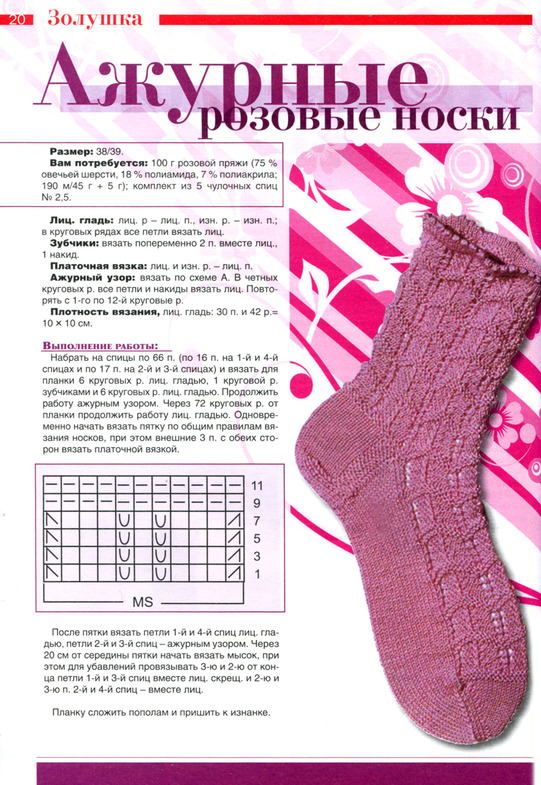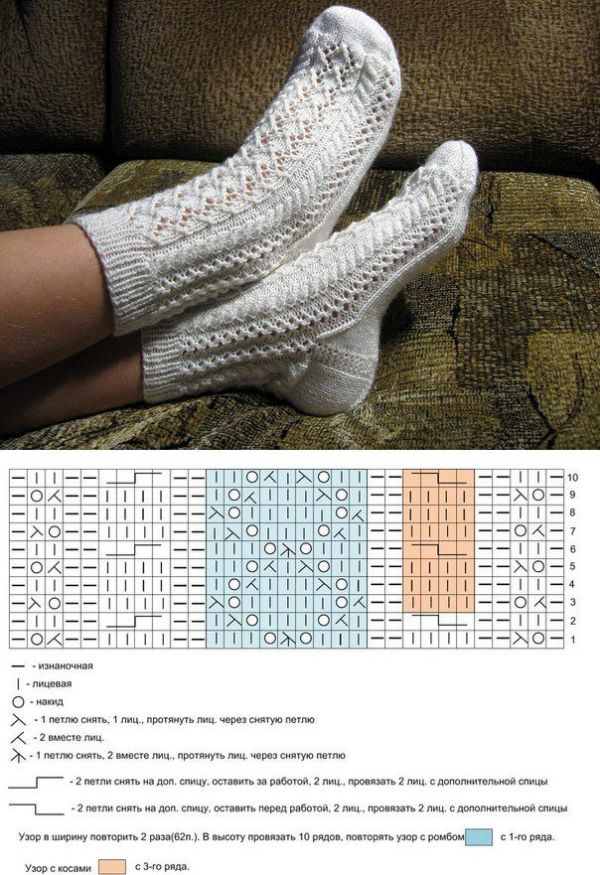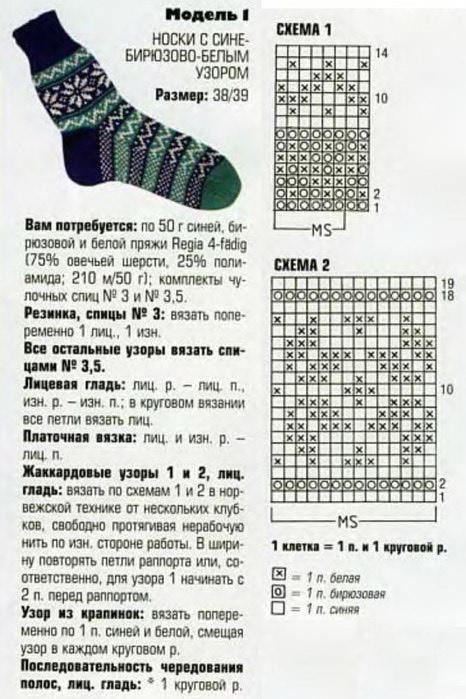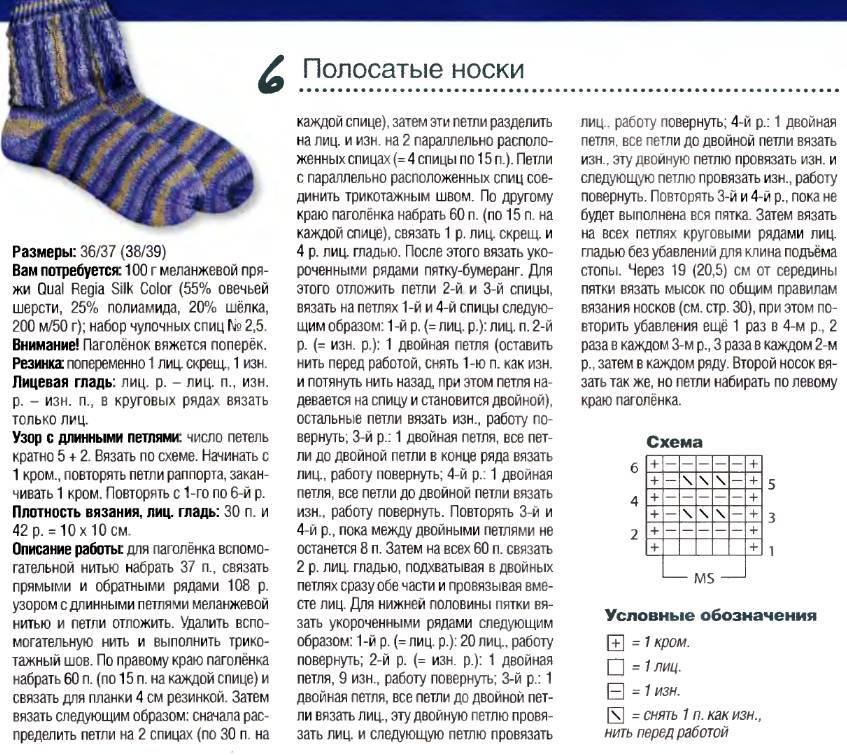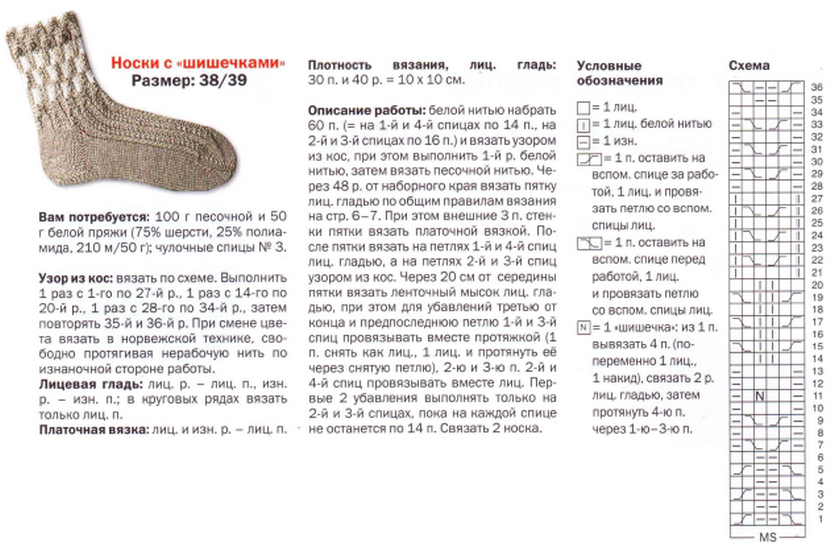
Knitting socks on five knitting needles: a photo of a master class with diagrams
Content
- Masterclass of Knitting Socks
- Video: Learning to knit socks on five knitting needles
- Knitting patterns for socks
Warm knitted socks with a beautiful pattern not onlyWarm in the cold winter season, but will also be a great addition to the everyday winter image. Knitting socks is an exciting activity, because during it you can use different patterns and experiment with the color of the threads. With warm socks you will not freeze even in the most severe frost!
Many experienced knitters are confident thatBeginning skilled workers it is better not to undertake for mastering of technics of knitting of socks on 5 spokes. We are convinced that this opinion is erroneous, because with due diligence and some perseverance even a beginner knitter can create on 5 spokes wonderful socks with a beautiful pattern.


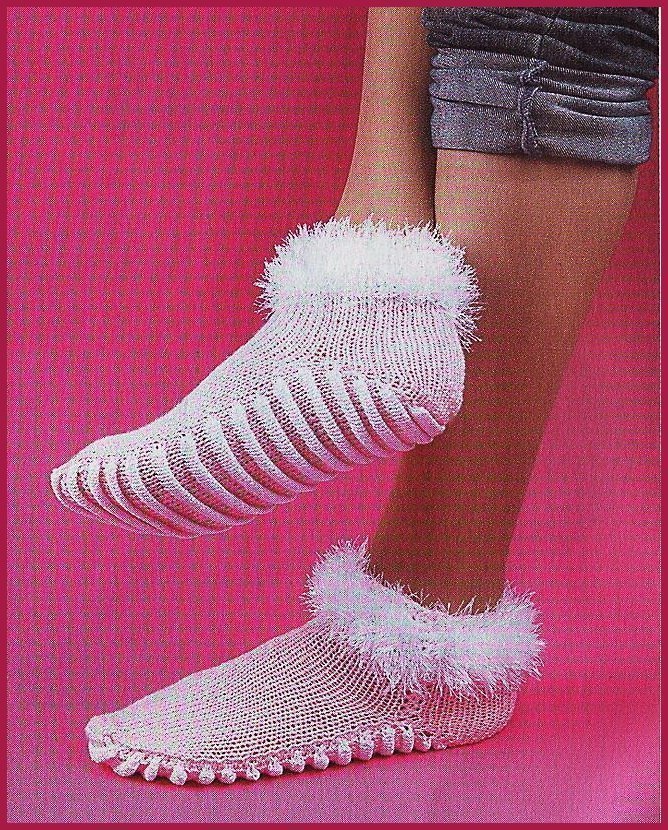


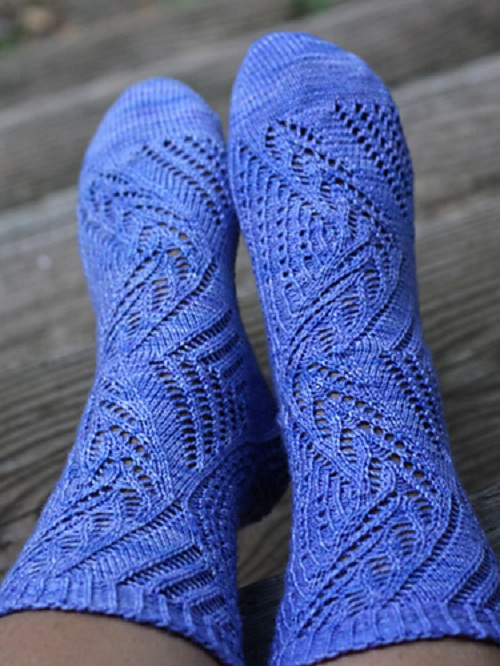
Masterclass of Knitting Socks
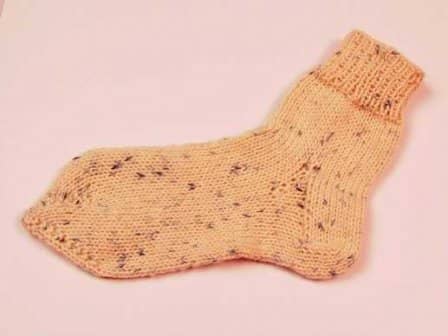
In this small master class specifically forBeginners knitters we want to talk about how you can knit warm socks on 5 spokes. Before you start studying the master class, you need to take a measurement, that is, measure the foot near the ankle.
The resulting number must be multiplied by 3 and in caseNeed to round. So, for example, if your volume is 13 cm then multiplying this figure by 3, you will get 39. After rounding, you will get 40. This is the number of loops you need to type on the knitting needles at the beginning of the master knitting class to refill your wardrobe with new socks.
While describing the technique of knitting socks, some abbreviations will be used:
- Etc. - a loop;
- R. - rows;
- Persons. - facial;
- Out. - purl;
- Chrome. - Edge.
We begin to knit socks. Type 40 spokes on the needles. When forming the first row, distribute the loops between the 4 spokes, so that they have the same number n.

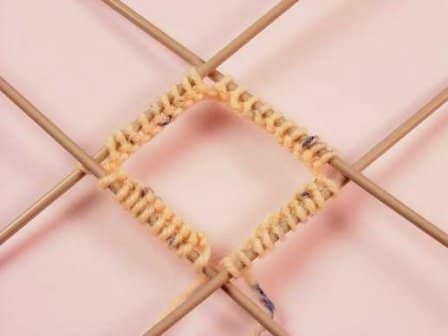
Cuff the sock, using a pattern underThe name of the rubber 1X1. Number of rivers. Depends on the length of the cuffs you need. Determine the optimal length of the cuff you can in the course of knitting, periodically applying the knitted article to the foot. At the next stage of the training master class on the outside of the product should be tied about 7 cm of persons. Smooth. Next, proceed to the formation of the heel. Participate in this at first glance rather laborious process will loops, put on knitting needles at number 3 and 4. They must be combined and transferred to one of the spokes.

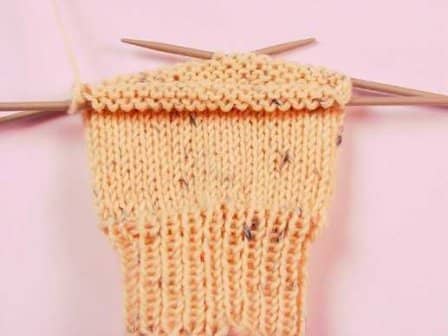
Many beginners are afraid to take upKnitting socks is precisely because of the heels. This is due to the fact that, according to novice heelers, the heel is the most difficult part of the knitted product. We hope that this small teaching master class will help you to make sure that this opinion is wrong and to tie a pair of sock is actually very simple. Carefully having studied the instruction on knitting, in the future you will be happy to knit socks and golfs for yourself and your loved ones. Of the combined n. It is necessary to tie the cloth equal to the height of the heel. To find the right number of loops, you need to count the chrome. Loops located on one side. In this master class, their number is 10.
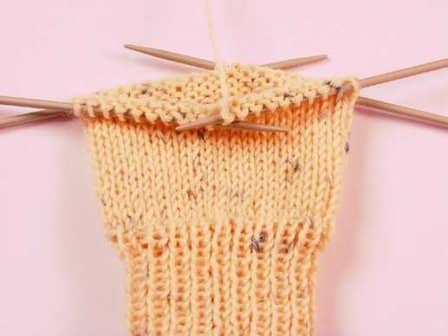
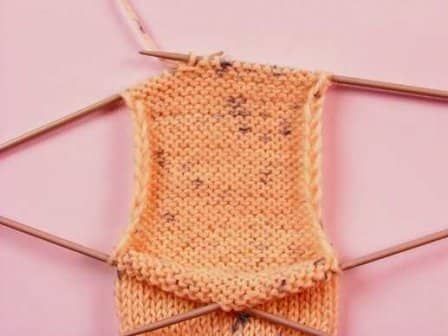
Please note that the back of the heelComplete the faces. R. Then you can start decreasing n inside the knitted fabric. To do this, the loops need to be divided by 3. In this master class, in the middle there were 8 points, and on the sides - 6 points. To perform the reduction, you need to tie out a part of the loops from the right needle. After this, it is necessary to tie the knitting together. The last point from the central part and the first from the side. Pay special attention to the fact that the other loops in the side are not tied. After which the work is turned over. In the central part all loops are performed by persons. The last point of the central region and the first point of the lateral region are tied together face-to-face. Then the knitted fabric is flipped again.

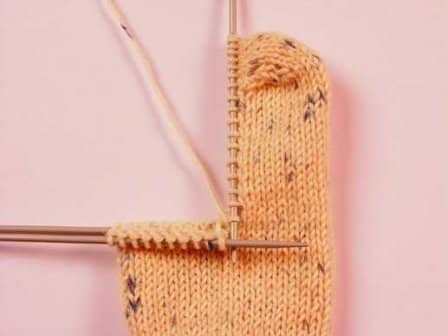
Repeat the above scheme of action beforePores, while on the spoke there will be 8 points left from the middle area. Finish the work of individuals. R. Then, on a needle with 8 sts, dial 10 pcs from the edge, located at the edge of the heel. Spray 10 loops on each of the two spokes. Using a free spoke, dial 10 pcs from the edge. On the heel and tying 4 p. From the central area.
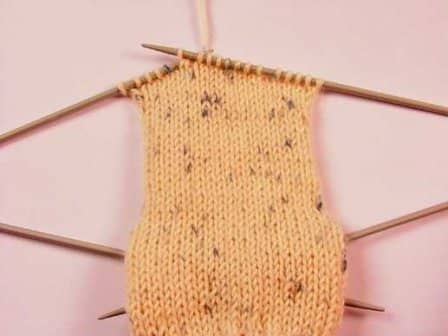
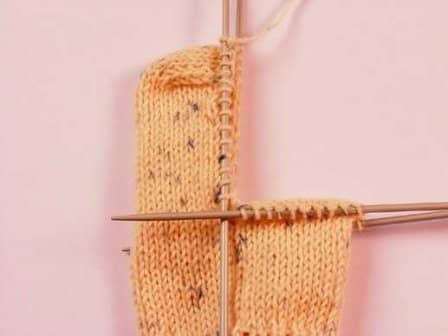
As a result, at this stage, the master class at workAll 4 knitting needles should be used again. In this case, on 1 and 2 spokes, the loops should be less than 3 and 4. Thanks to this, the sock will not pull the leg in the area of lifting. At this stage, you can start circular knitting and reducing unnecessary n. Decreases are made at the beginning of 3, and also at the end of 4 knitting needles. Loops are bred 2 together after every 2 p. After the number of loops is equal to the originally typed amount of reduction do not have to. According to such a simple scheme, the sock knit to the end of the little finger.

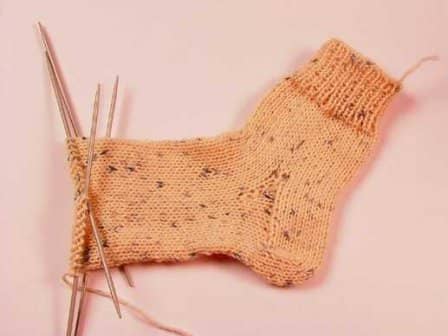
When the product is connected to the little finger, you canWill begin to form a toe. To do this, at the end of each knitting needle, two loops are to be sewn together. These kinds of adjustments are made until at each of the 4 working tools there are 1 p. Left. At this stage, the training master of the class must break the thread.
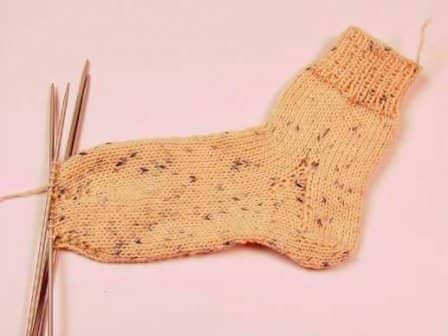

Pay special attention to the fact that with a breakThread remains a small piece, the length of which is about 15 cm. This piece must be put into the needle and sewed them open loops tie in a tight bundle. Sock is almost ready! At the end of the master class you just need to hide the protruding thread from the underside of the product. This can be done easily with a conventional hook. It must be carried through the toe cap, and after picking up the thread, pull it to the underside.
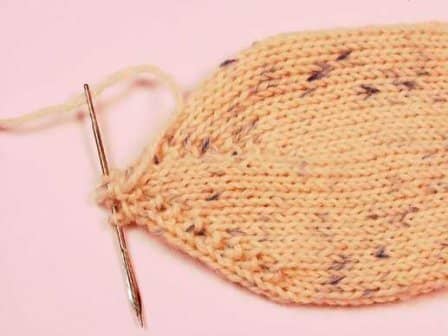
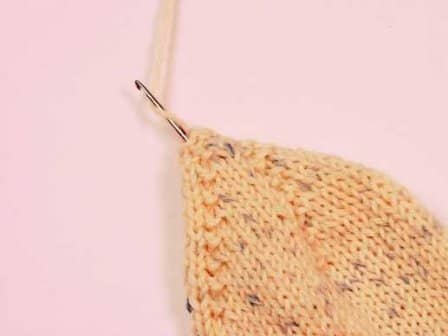
Using the same scheme, you can easily hide a piece of thread left from the set of loops.

Having mastered such a simple and straightforward techniqueKnitting, you can try to create more complex patterns. Products, which have patterns, look more original and stylish, but to create them is an order of magnitude more difficult, that's why we recommend beginning masters to try their hand at knitting a simple model and only after that start to master complex patterns!

Video: Learning to knit socks on five knitting needles
